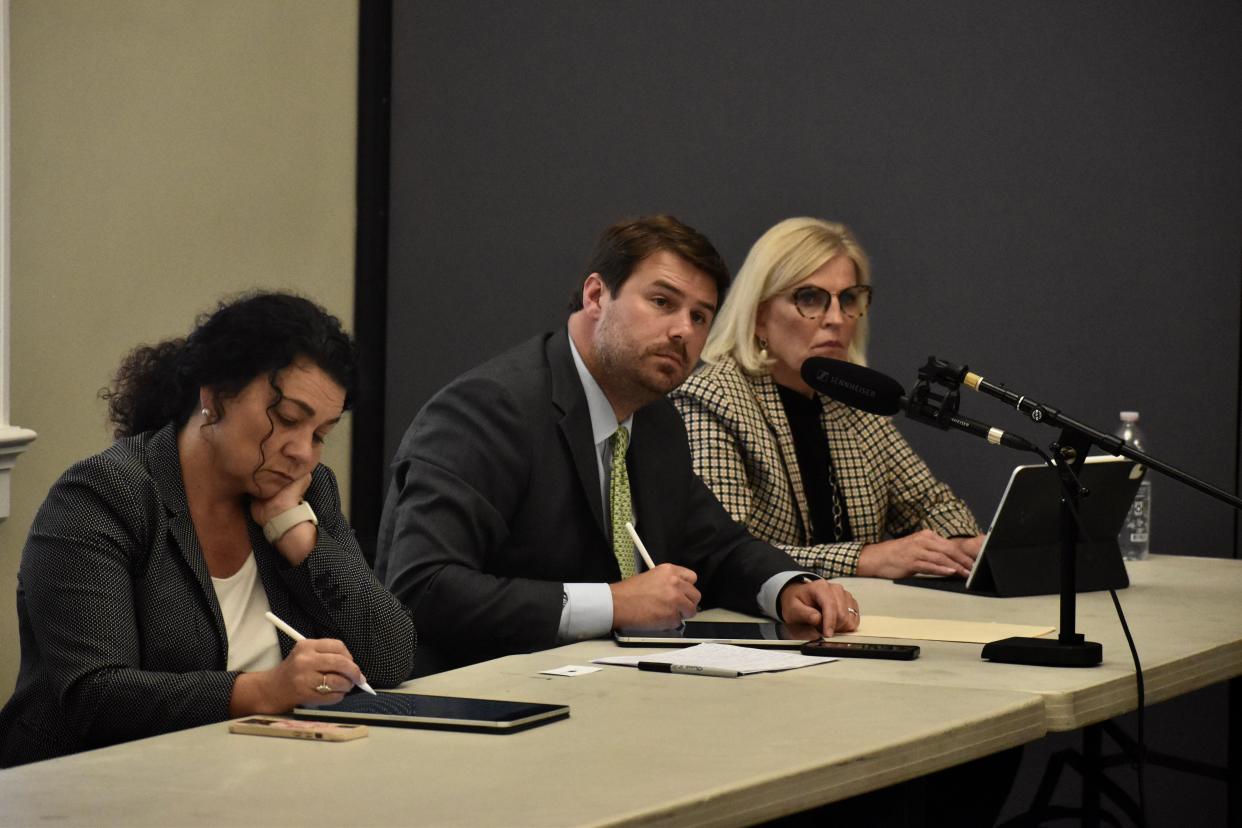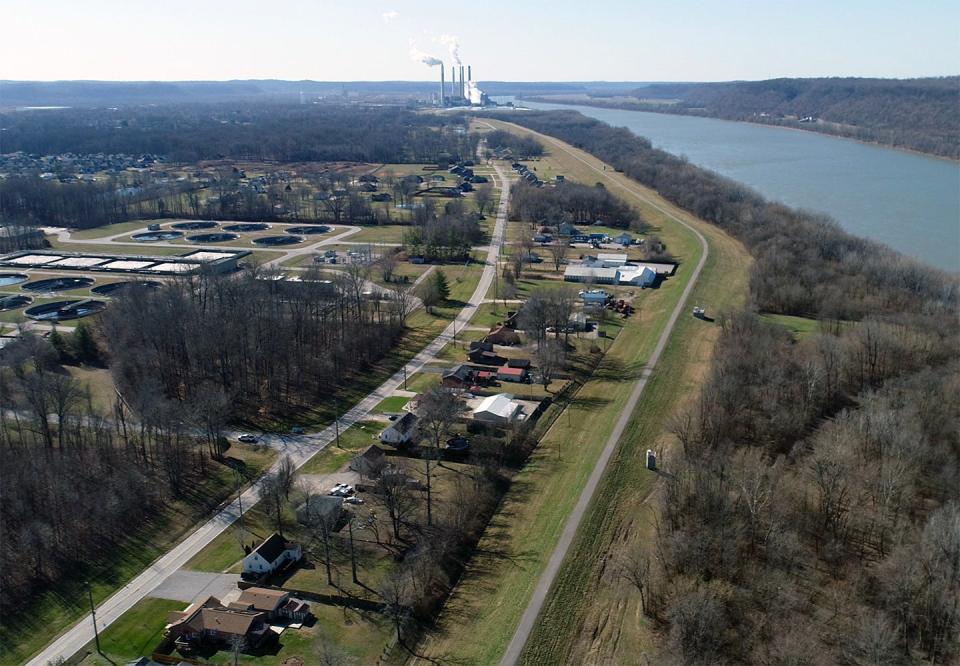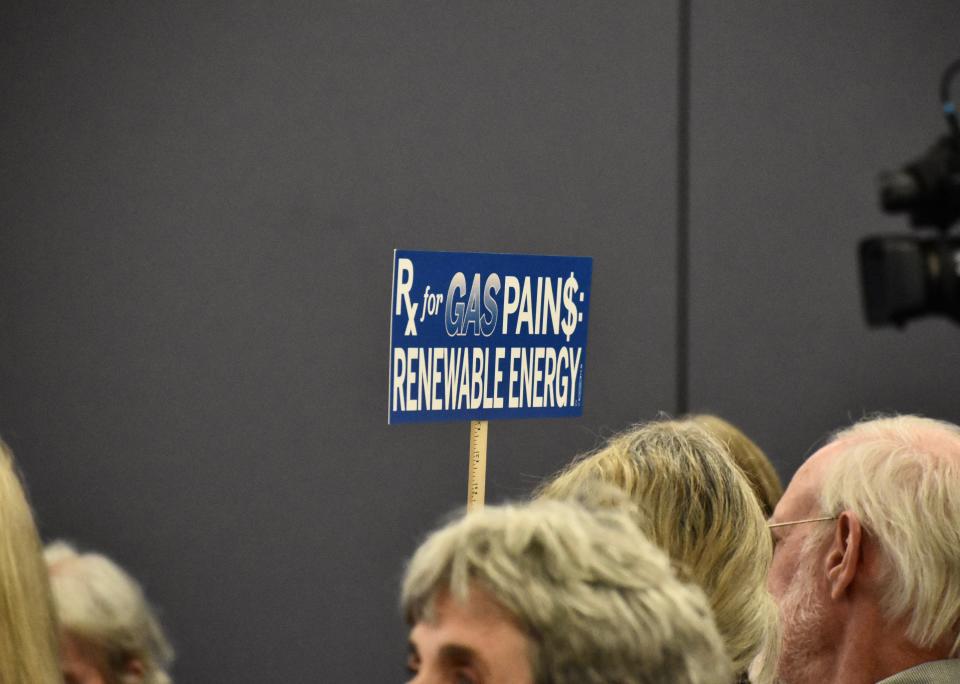Kentucky regulators faced with big decision: Should coal still keep the lights on?

Kentucky's biggest utility is before regulators this week, requesting to make changes that will define how energy is generated for hundreds of thousands of Kentucky homes and businesses.
The plan would pivot LG&E and KU's generation capacity away from coal and toward another fossil fuel: natural gas. It would also increase the utilities' renewable portfolio through investments in solar and battery storage.
The plan represents additional fossil fuel investment even as the world's leading climate scientists warn of a rapidly closing window to drastically reduce greenhouse gas emissions. But the utility says its plan represents "the right mix" of sustainability, affordability and reliability.
The decision on Kentucky's energy future falls to the state Public Service Commission. And for the first time, the commission must consider new legislation passed by lawmakers earlier this year, which adds additional legal hurdles to retiring coal power plants.
Here's a rundown of the issues:
What is LG&E and KU's plan?
The utility wants to retire a significant portion of its coal-fired generation, several units that it says are "reaching the end of their economic life," by 2028.
To replace the retired energy generation, the utility wants to build two new, 621-megawatt natural gas combined-cycle units. One would go on the existing E.W. Brown site in Mercer County, and the other would go on the Mill Creek site in southwest Jefferson County.
The plan also includes significant investments in solar and battery storage, and what the utility has called "the largest number of energy efficiency programs" in its history.
Replacing coal generation with a mix of natural gas and renewable energy is the least costly option for ratepayers, the utility has said. Replacing the retirements with all renewables would cost about $2 billion more than the plan it has proposed, according to the utility.
Hearings on the case run throughout this week, and the commission is set to issue a decision on the case by November.
What role does the Kentucky legislature play in this?

Earlier this year, the Kentucky legislature added barriers to retiring coal-fired power plants, against the wishes of utilities like LG&E and KU, with the passage of Senate Bill 4.
Now, for the first time, the Public Service Commission will have to consider the new rules as it forms a decision on the utility's filing.
The statute dictates the decision to retire fossil fuel generation cannot be the result of federal incentives or benefits. And if a utility wants to replace a fossil fuel plant with another form of energy, that new form must be "dispatchable" — meaning its generational output can be scaled up and down quickly on demand.
During a public meeting this month, a question was posed to commission officials on whether renewable energy could be implemented in place of coal power, given this rule: "Do renewables count as dispatchable?"
"That's a substantive issue that will be decided in the case," said Nancy Vinsel, general counsel for the commission.
Commissioners are also charged with weighing the cost of the utility's plan and ensuring it would not pose an undue burden to ratepayers. Multiple public commenters asked officials whether "cost" included factors like biodiversity and habitat losses, future health care costs linked to pollution, and other detriments from fossil fuels and climate change.
Officials did not provide a detailed answer on how the commission calculates cost, or whether environmental health considerations would be included.
"The commission speaks through its orders," Vinsel said.
What are Kentuckians saying about the plan?
The utility's plan has faced opposition and concerns from the public in all parts of the state. It hasn't been all for the same reasons.
Coal industry interests have criticized coal-fired generation retirements as another iteration of the "war on coal." And in other public comment meetings, like the one in Harlan County, the utility's plan met opposition not for its additional fossil fuel investment, but for its abandonment of coal.
"We should utilize more coal, not less," Harlan County Judge Executive Dan Mosley said in a public comment session there, sharing concerns around coal jobs, grid reliability and future rates.

The tone in Louisville was far different. In the final public comment session on the utility's plan, held in Louisville last week, more than 70 people filled a room in the main branch of the Louisville Free Public Library.
Many made clear their opposition to any new fossil fuel investments. Several wore "Save Bernheim now" shirts, signaling opposition to LG&E's proposed pipeline through Bernheim forestlands in Bullitt County.
"We really want to understand what is in your cost equation, because we deserve all the costs to be included," Jackie Cobb, an energy consultant and mother of two young children, told the commission. "The cost of the environment, the cost to human life, the cost of methane leakage, the cost of health care and the cost of emergency services."
The increasing affordability of renewable energy should also warrant a deeper analysis of those options, advocates said. Cobb and others pointed out the volatility of natural gas prices, and how that unpredictability could be passed on to ratepayers.
Throughout the process of producing, transporting and burning natural gas, large amounts of methane are released into the atmosphere. Methane is a potent greenhouse gas, and depending on the rate of leakage, natural gas may affect climate just as much as coal, one Environmental Research Letters study recently found.
Some public commenters worried that with massive shifts in federal investment toward renewable energy, including the Inflation Reduction Act, new fossil fuel infrastructure could become stranded assets and a burden to ratepayers.
"How can natural gas-burning generation even be considered, when it's only a matter of time that these plants will be phased out?" asked Mark Wourms, executive director of Bernheim Arboretum and Research Forest. "We will indeed have some stranded assets that we'll be paying for for a generation."
LG&E and KU have pledged to be at net zero carbon by 2050, and said this plan would "decrease carbon emissions in a measured fashion." The two new natural gas plants would run for decades, and the utility's ability to meet its net-zero goals will likely bank heavily on carbon capture technology that has yet to prove reliable at scale.
"The more electricity and gas LG&E sells, the more money they make," said Greg Zahradnik, a retired lighting research engineer for GE. "That's a little bit in contrast with our sustainability goals."
Quincy Robinson, a voter empowerment contractor with Kentuckians For The Commonwealth, noted an older crowd in the public comment session. He wished the event had been publicized more to younger demographics — those who will see the worst impacts of climate change.
"Some people in my generation are afraid to have kids," said Robinson, 23. "We don't want to raise children in a world of climate disaster."
Connor Giffin is an environmental reporter for The Courier Journal and a corps member with Report for America, a national service program that places journalists in local newsrooms to report on under-covered issues. The program funds up to half of corps members’ salaries, but requires a portion also be raised through local community fundraising. To support local environmental reporting in Kentucky, tax-deductible donations can be made at courier-journal.com/RFA.
Learn more about RFA at reportforamerica.org. Reach Connor directly at cgiffin@gannett.com or on Twitter @byconnorgiffin.
This article originally appeared on Louisville Courier Journal: Kentucky PSC faces big decision: Should coal still keep the lights on?

